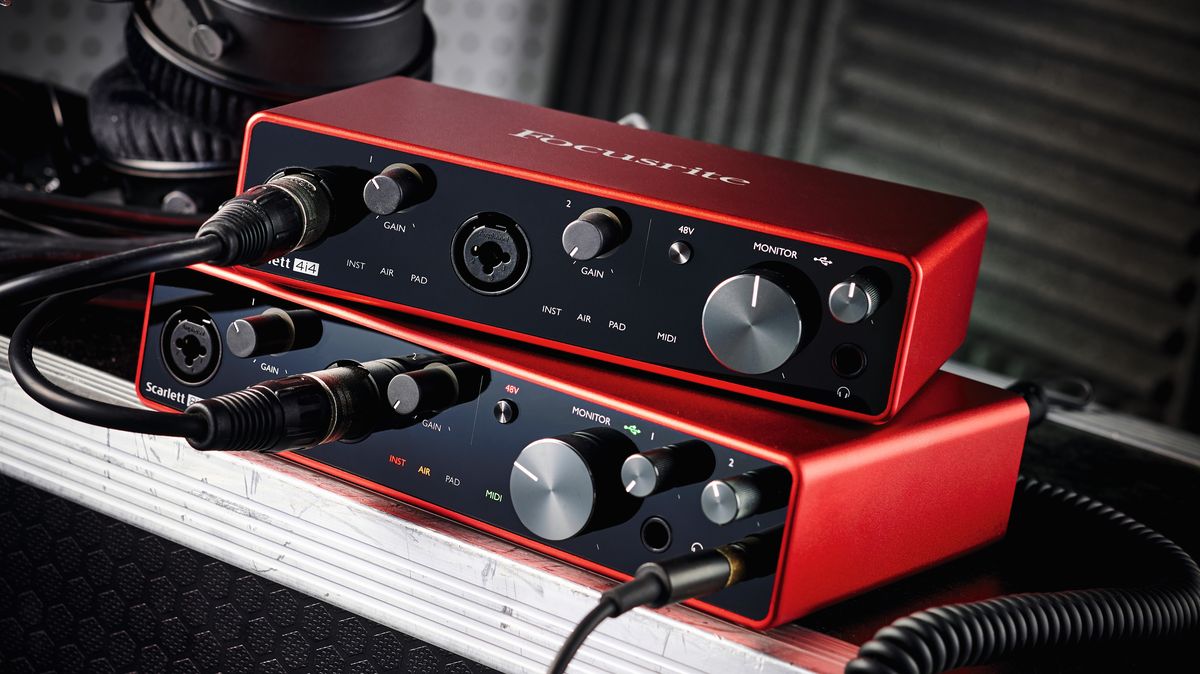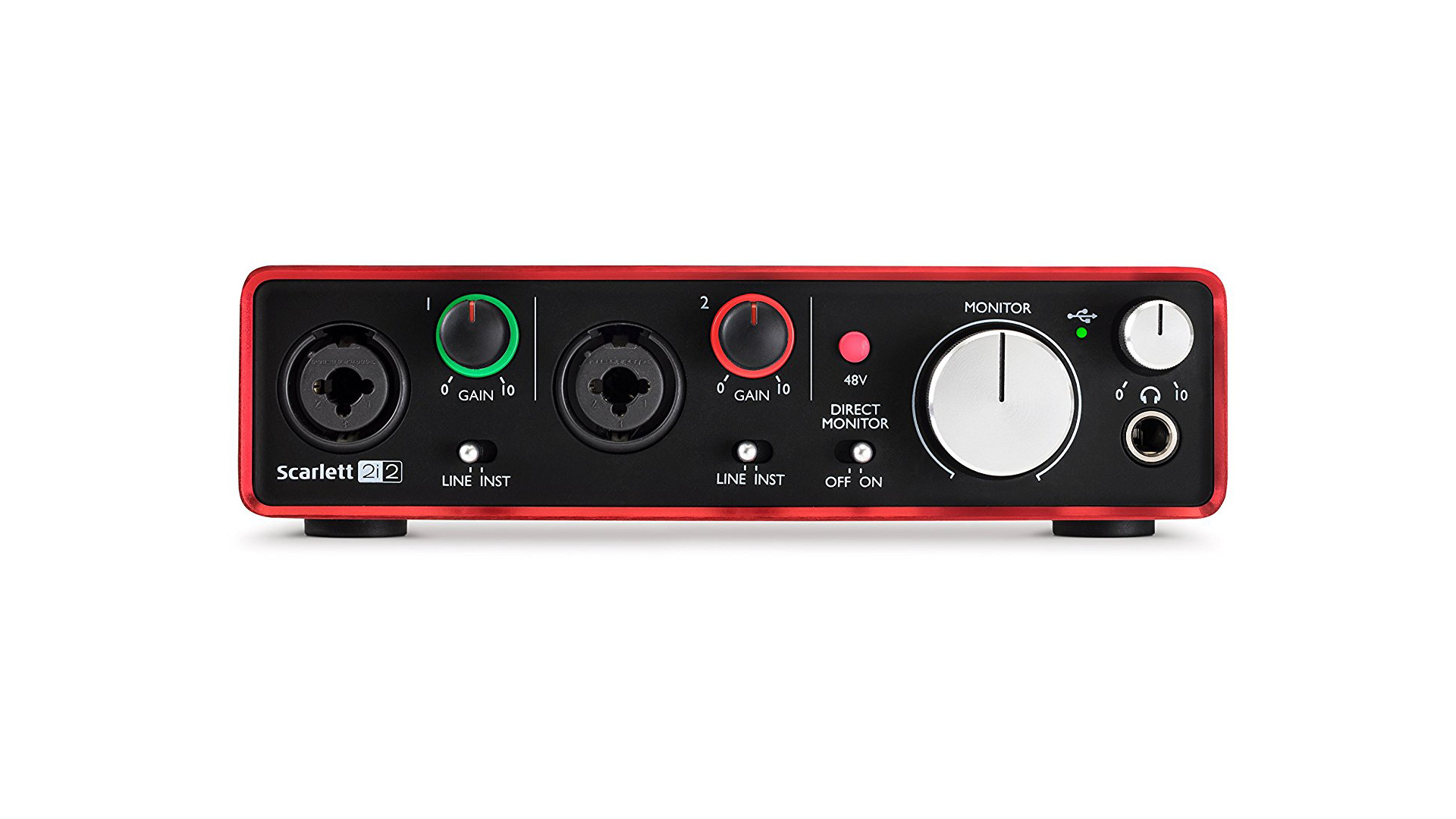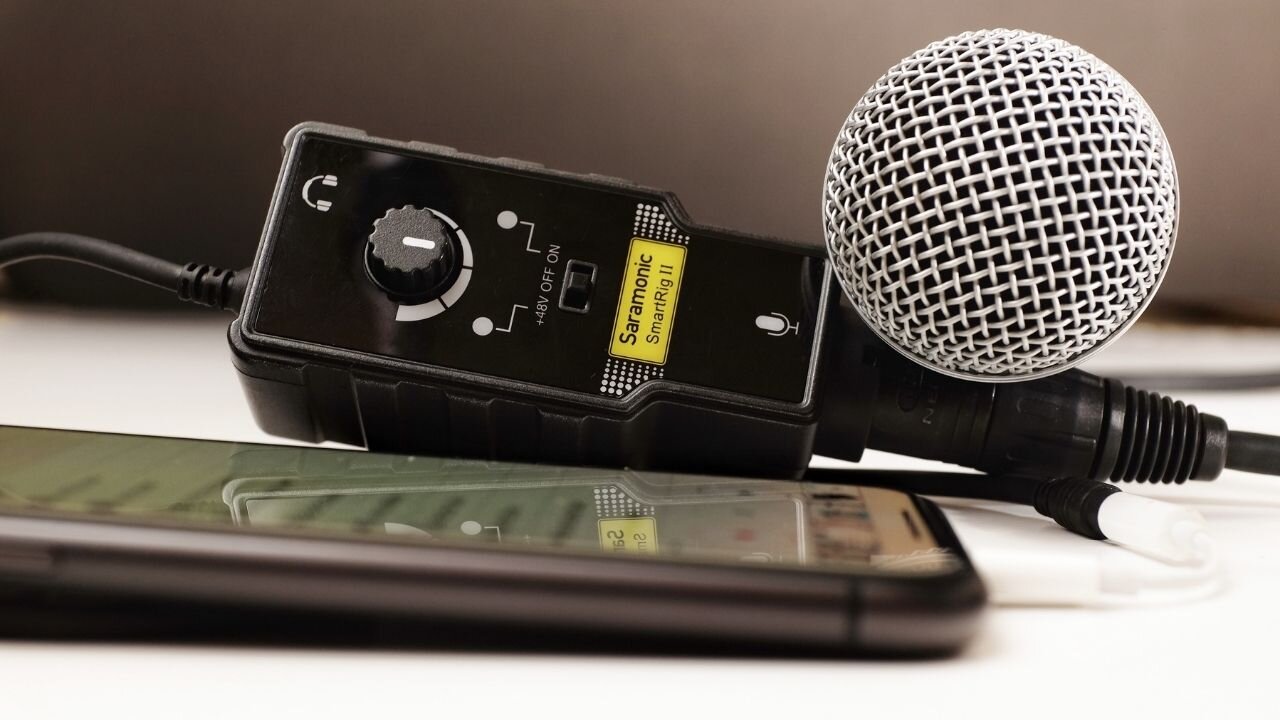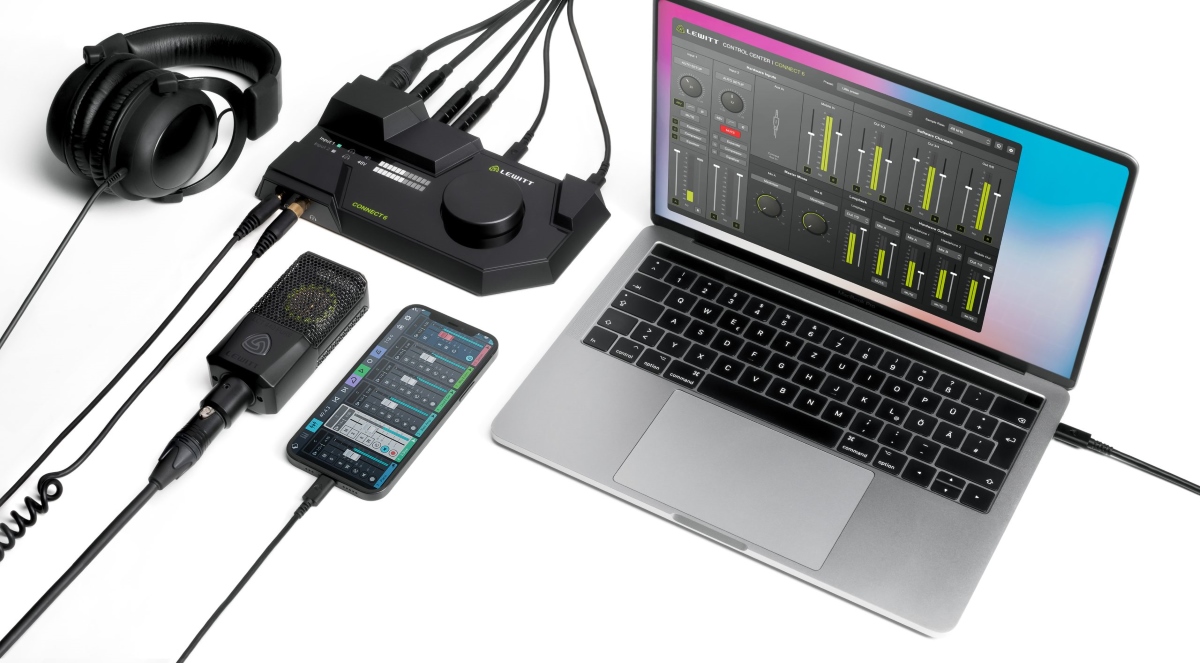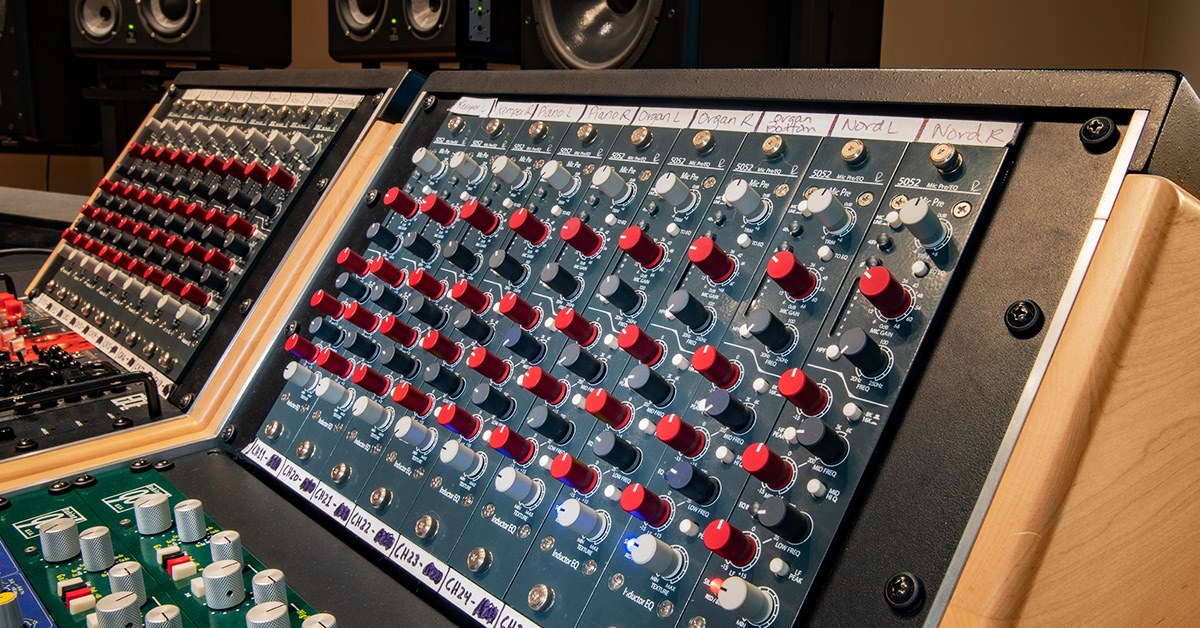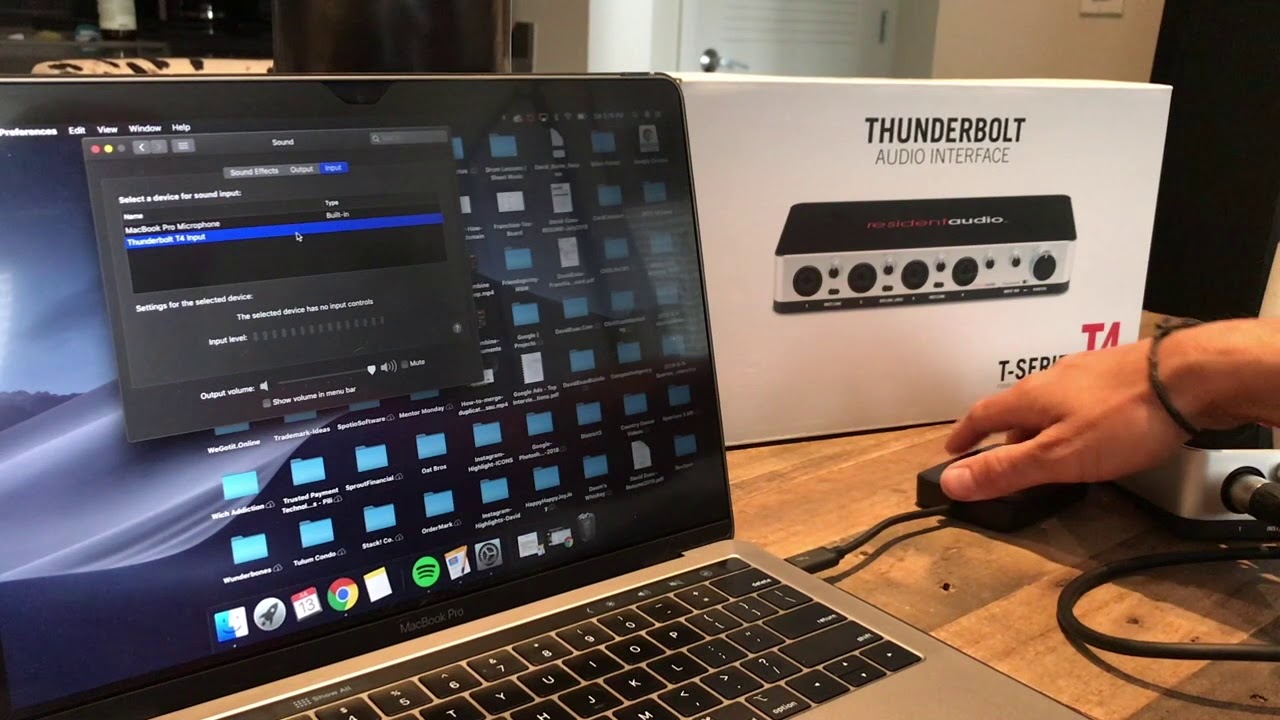Home>Production & Technology>Audio Interface>How Much Is An Audio Interface
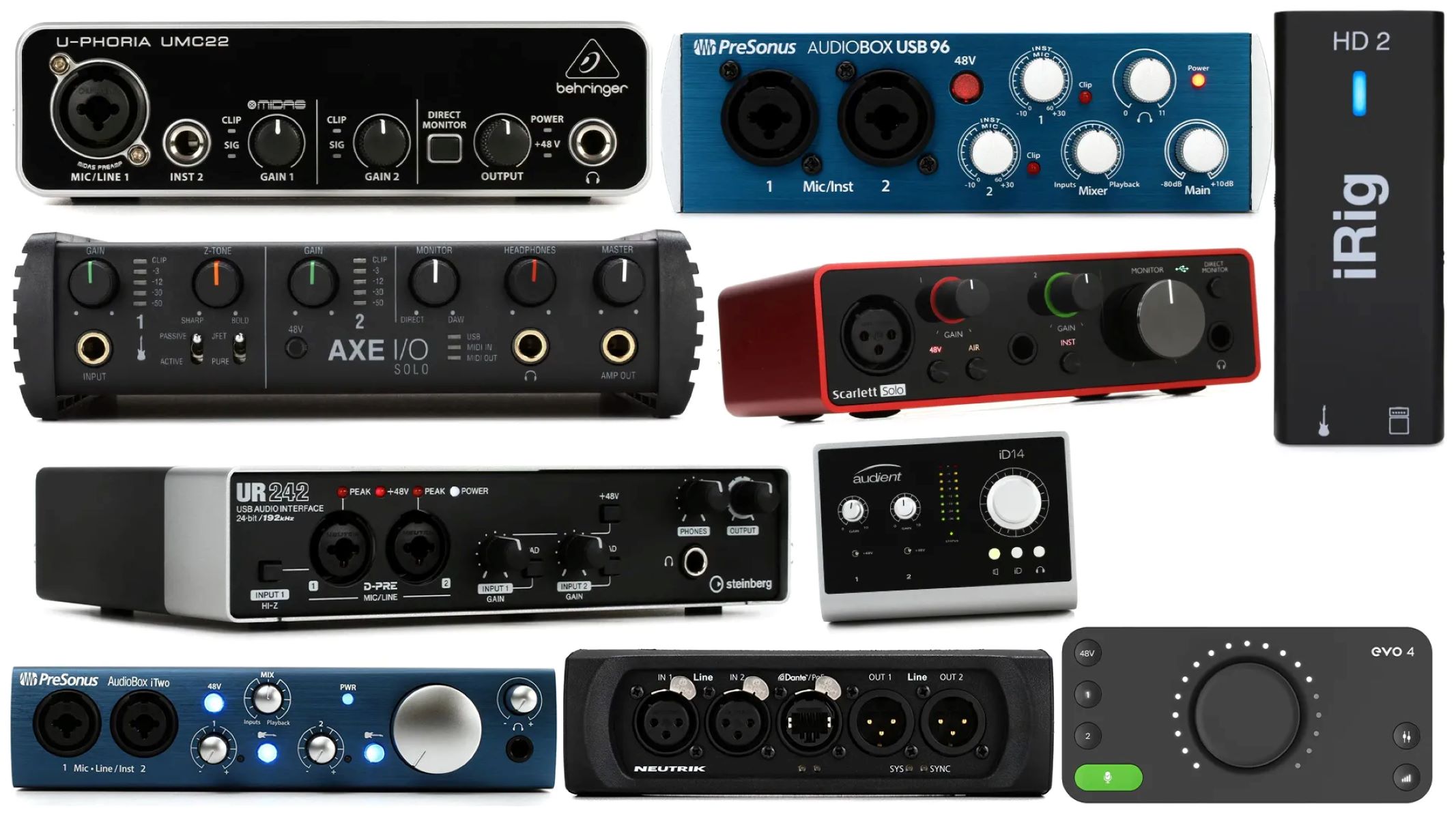

Audio Interface
How Much Is An Audio Interface
Modified: March 11, 2024
Discover the cost of audio interfaces and find out how much you should be spending on this essential recording equipment. Compare prices and features now!
(Many of the links in this article redirect to a specific reviewed product. Your purchase of these products through affiliate links helps to generate commission for AudioLover.com, at no extra cost. Learn more)
Table of Contents
- Introduction
- What is an Audio Interface?
- Importance of an Audio Interface
- Factors to Consider When Buying an Audio Interface
- Types of Audio Interfaces
- USB Audio Interfaces
- Thunderbolt Audio Interfaces
- FireWire Audio Interfaces
- PCIe Audio Interfaces
- Choosing the Right Audio Interface for Your Needs
- Popular Audio Interface Brands
- Pricing of Audio Interfaces
- Conclusion
Introduction
An audio interface is a crucial piece of equipment for any musician, podcaster, or audio enthusiast. It serves as the bridge between your computer and the outside world, allowing you to connect microphones, instruments, and speakers to your digital audio workstation (DAW) or recording software. Whether you’re a beginner or a professional, having a quality audio interface can significantly improve the sound quality of your recordings.
With advancements in technology, audio interfaces have become more accessible, affordable, and feature-rich. They come in various shapes and sizes, offering different input and output options to suit different needs. From simple two-input models to sophisticated multi-channel interfaces, there is an audio interface available for every level of recording.
But why do you need an audio interface in the first place? Can’t you just plug your microphone directly into your computer’s headphone jack? Well, technically, yes, you can. However, the audio quality and performance will be subpar. Audio interfaces are specifically designed to handle and process audio signals with greater precision and fidelity than a standard computer sound card.
Furthermore, audio interfaces offer features like phantom power, gain control, analog-to-digital conversion, and low-latency monitoring, all of which are essential for professional-grade recordings. They provide cleaner and more professional-sounding audio, reducing interference, noise, and distortion that can be introduced by the computer’s internal sound card.
When choosing an audio interface, there are several factors to consider, such as the number and type of inputs and outputs you require, the connectivity options, the quality of the preamps and converters, and your budget. It’s important to understand your specific needs and priorities to make an informed decision.
In this article, we will explore the different types of audio interfaces available, including USB, Thunderbolt, Firewire, and PCIe interfaces. We will also discuss popular audio interface brands and provide an overview of their pricing. By the end of this article, you will have a good understanding of what an audio interface is, its importance, and how to choose the right one for your recording needs.
What is an Audio Interface?
An audio interface is a device that connects audio equipment, such as microphones, instruments, and speakers, to your computer. It serves as a bridge between your analog audio signals and the digital world, allowing you to record and playback high-quality audio using your computer’s recording software or digital audio workstation (DAW).
At its core, an audio interface converts analog audio signals into digital data that your computer can process. It typically consists of inputs, outputs, preamps, converters, and various control knobs or buttons. The inputs accept audio signals from microphones, instruments, or other line-level devices, while the outputs deliver audio to your speakers or headphones.
One of the primary functions of an audio interface is to provide high-quality microphone preamps. These preamps amplify the weak signals coming from microphones, ensuring that they are at an optimal level for recording. Good preamps offer clean gain, low noise, and accurate representation of the original sound source.
Another crucial component of an audio interface is the AD/DA converter. The analog-to-digital converter (ADC) converts analog audio signals into digital data, allowing your computer to process and manipulate the audio. Similarly, the digital-to-analog converter (DAC) converts the digital audio back into analog signals for playback through speakers or headphones.
Additionally, audio interfaces often include features like phantom power, which is necessary for powering condenser microphones, and direct monitoring, which allows you to hear your input signals in real-time without any noticeable delay. Many interfaces also offer MIDI inputs and outputs for connecting MIDI devices, such as keyboards or controllers.
Audio interfaces come in various shapes and sizes to accommodate different recording needs. Some are compact, portable, and bus-powered, making them ideal for musicians on the go. Others are rack-mounted units with numerous inputs and outputs, catering to professional studios and audio engineers.
Overall, an audio interface is a crucial tool for anyone involved in recording, mixing, or producing audio. It allows you to achieve professional-quality recordings, ensures low-latency monitoring, and provides the necessary connectivity options for your specific needs. Investing in a good audio interface can greatly enhance your audio production workflow and unlock new creative possibilities.
Importance of an Audio Interface
An audio interface is an essential tool for achieving high-quality audio recordings and productions. Here are some key reasons why an audio interface is important:
- Improved Sound Quality: One of the main reasons to invest in an audio interface is the improvement in sound quality. Built-in sound cards found in computers or laptops are often limited in terms of audio fidelity and can introduce noise and interference. An audio interface with quality preamps and converters offers cleaner, more transparent audio recordings with better dynamic range and resolution.
- Low-Latency Monitoring: Audio interfaces typically offer direct monitoring capabilities, which allow you to monitor your input signals in real-time without perceivable delay. This is essential for recording, as it enables musicians to hear themselves while playing or singing. With direct monitoring, you can also apply effects or monitor different audio sources with minimal latency.
- Flexibility and Connectivity: An audio interface expands the connectivity options for your recording setup. It provides a variety of inputs and outputs, allowing you to connect microphones, instruments, headphones, and studio monitors simultaneously. This flexibility is particularly useful for multi-track recording, live performances, or podcasting setups.
- Phantom Power for Condenser Mics: Condenser microphones, widely used in professional recording, require phantom power to operate. An audio interface typically provides phantom power, ensuring that your condenser microphone receives the necessary voltage for optimal performance.
- Better Control and Monitoring: Audio interfaces offer dedicated volume controls, gain knobs, and other monitoring features. These allow you to adjust your input levels, set balanced recording levels, and have precise control over the audio signals. This level of control is crucial for achieving the desired sound and maintaining a proper signal-to-noise ratio.
- Compatibility and Integration: Audio interfaces are designed to work seamlessly with popular recording software and digital audio workstations (DAWs). They often come with driver software that ensures compatibility and smooth integration. This makes it easier to set up and use the interface with your preferred recording software.
In summary, an audio interface is a vital component for any recording setup. It improves the overall sound quality, provides low-latency monitoring, offers connectivity options, and gives you better control and flexibility in your audio production workflow. Investing in a quality audio interface will elevate your recordings and help you achieve professional results.
Factors to Consider When Buying an Audio Interface
When choosing an audio interface for your needs, it’s important to consider several factors to ensure that you make the right purchase. Here are some key factors to consider:
- Input and Output Configuration: Determine how many inputs and outputs you require for your recording setup. Consider the number of microphones, instruments, or line-level devices you will be connecting. Additionally, think about your need for headphone outputs and monitor outputs.
- Preamps and Converters: The quality of the preamps and converters in an audio interface greatly affects the sound recording and playback. Look for interfaces that offer high-quality preamps with low noise and transparent sound reproduction. Similarly, ensure that the digital-to-analog converters and analog-to-digital converters deliver accurate and detailed audio conversion.
- Connectivity Options: Consider the types of connections available on the audio interface. USB interfaces are widely compatible and can work with most computers. Thunderbolt interfaces offer faster data transfer speeds for low latency performance. Firewire and PCIe interfaces are more specialized and may require specific hardware or expansion cards.
- Sampling Rate and Bit Depth: Higher sampling rates and bit depths allow for more detailed and accurate audio recordings. Consider the maximum sampling rate and bit depth supported by the audio interface, especially if you plan to work on high-resolution audio projects.
- Software Compatibility: Ensure that the audio interface is compatible with your preferred recording software or digital audio workstation (DAW). Check for compatibility with both the operating system of your computer and the specific software you intend to use.
- Budget: Set a budget for your audio interface purchase. Audio interfaces come in a wide range of prices, and it’s important to find a balance between your budget and the features you need. Consider the long-term investment and how the interface can grow with your recording needs.
- Reviews and Recommendations: Read reviews and seek recommendations from trusted sources or fellow musicians/producers. Look for feedback on build quality, reliability, customer support, and overall user experience. This can help you make an informed decision and avoid potential issues.
By considering these factors, you can narrow down your options and choose an audio interface that meets your specific requirements. Remember, the right audio interface will not only provide the necessary connectivity but also enhance the overall sound quality and improve your recording and production workflow.
Types of Audio Interfaces
Audio interfaces come in different types, each offering unique features and connectivity options. Understanding the different types can help you choose the right interface for your recording needs. Here are the main types of audio interfaces:
- USB Audio Interfaces: USB interfaces are the most common and widely used type of audio interface. They are affordable, easy to use, and compatible with most computers. USB interfaces offer a variety of input and output options, ranging from simple two-channel interfaces to multi-channel setups. They are suitable for home studios, podcasting, and solo musicians.
- Thunderbolt Audio Interfaces: Thunderbolt interfaces offer faster data transfer speeds than USB interfaces, resulting in lower latency and improved performance. They are favored by professional audio engineers and producers who require high track counts and real-time processing. Thunderbolt interfaces are known for their stability and compatibility with Mac computers.
- FireWire Audio Interfaces: FireWire interfaces were once popular, especially among Mac users. While their prevalence has decreased due to the rise of USB and Thunderbolt, FireWire interfaces still offer reliable performance and low-latency connectivity for those with compatible hardware and computers.
- PCIe Audio Interfaces: PCIe interfaces are designed to be installed internally in a desktop computer via a PCIe expansion slot. These interfaces offer exceptional performance and ultra-low latency as they utilize the computer’s internal bus. PCIe interfaces are primarily used in professional studios and advanced recording setups that demand maximum performance and track counts.
Each type of audio interface has its advantages and considerations. USB interfaces are more affordable and suitable for most home recording setups, while Thunderbolt interfaces offer faster performance and are preferred by professionals. FireWire interfaces are less common but still functional for certain setups, and PCIe interfaces deliver top-tier performance for demanding recording requirements.
When choosing the type of audio interface, consider your computer’s connectivity options, the number of inputs and outputs you require, and your budget. Additionally, think about the scalability and future expansion of your recording setup to ensure that the interface you choose can accommodate potential changes and growth.
It’s worth noting that some audio interfaces may offer a combination of different connection options, such as USB and Thunderbolt, to provide maximum compatibility and flexibility. This allows users to connect their interface to different computers and hardware without limitations.
Ultimately, the type of audio interface you choose will depend on your specific recording needs, budget, and compatibility with your existing setup. By understanding the different types available, you can make an informed decision and select an interface that best suits your requirements.
USB Audio Interfaces
USB audio interfaces are the most popular and widely used type of audio interfaces. They offer simplicity, affordability, and broad compatibility with most computers, making them a great choice for beginner home studios, podcasters, and solo musicians.
USB interfaces typically connect to your computer via a USB cable, providing both data transfer and power supply. This means that they are often bus-powered, eliminating the need for an external power source. This makes USB interfaces highly portable and convenient, as they can be easily connected to laptops or computers without requiring additional cables or power adapters.
One of the advantages of USB interfaces is their versatility in terms of input and output options. They come in various configurations, ranging from simple two-input, two-output interfaces to more complex models with multiple inputs for microphones, instruments, and line-level sources. Some USB interfaces also include MIDI input and output ports for connecting MIDI controllers or instruments.
USB interfaces provide good audio quality and performance for most home recording needs. They typically feature built-in microphone preamps, which are essential for recording vocals or acoustic instruments. The quality of the preamps can vary between models, so it’s important to consider this aspect if you require pristine audio capture.
Another advantage of USB interfaces is their compatibility with a wide range of recording software and digital audio workstations (DAWs). They are designed to work seamlessly with popular operating systems such as Windows, macOS, and Linux. However, it’s always a good idea to check the compatibility of the specific model you’re considering with your computer and recording software.
USB interfaces offer convenience, affordability, and flexibility for small-scale recording setups. They are suitable for recording vocals, acoustic instruments, podcasts, and small ensembles. Some USB interfaces also include software bundles or plugins to enhance your recording capabilities and provide additional tools for mixing and mastering.
While USB interfaces offer many advantages, it’s important to note that they can have limitations in terms of latency performance and track count. If you require extensive routing options, extensive simultaneous recording, or low-latency performance for virtual instruments and real-time processing, you may need to consider other types of interfaces, such as Thunderbolt or PCIe.
Overall, USB audio interfaces are an excellent choice for entry-level and intermediate users who need a reliable, affordable, and portable solution for their recording needs. They provide a versatile range of input options, good audio quality, and broad compatibility with various recording software. With a USB interface, you can start creating high-quality recordings in your home studio with ease.
Thunderbolt Audio Interfaces
Thunderbolt audio interfaces are a popular choice among professionals and advanced recording enthusiasts due to their exceptional performance and low-latency capabilities. Thunderbolt technology provides lightning-fast data transfer speeds and is specifically designed for high-bandwidth audio and video applications.
One of the key advantages of Thunderbolt interfaces is their fast data transfer rates. Thunderbolt 3, the latest version of Thunderbolt, offers speeds of up to 40 Gbps, allowing for high-resolution audio recording, extensive track counts, and real-time processing without any noticeable latency. This makes Thunderbolt interfaces a top choice for demanding recording projects and professional studios.
Thunderbolt interfaces are known for their stability and reliability in handling large-scale recording setups. They can handle multiple inputs and outputs simultaneously, making them ideal for multi-track recording, live performances, and complex mixing sessions. With Thunderbolt interfaces, you can connect a wide range of microphones, instruments, and outboard gear without sacrificing performance.
Another advantage of Thunderbolt interfaces is their compatibility with Mac computers. Thunderbolt technology was initially developed by Intel in collaboration with Apple, and Macs have been at the forefront of Thunderbolt adoption. Thunderbolt interfaces are designed to work seamlessly with Mac computers and offer enhanced compatibility and performance with macOS and Apple’s Core Audio technology.
While Thunderbolt interfaces are primarily associated with Macs, they are also compatible with Windows computers that have Thunderbolt connectivity. However, it’s essential to ensure that your Windows computer has Thunderbolt ports and that the Thunderbolt interface you choose is compatible with the Windows operating system.
It’s worth noting that Thunderbolt interfaces can be more expensive than USB interfaces, mainly due to the advanced technology and faster data transfer rates they offer. However, if you require high track counts, low-latency performance, and extensive routing options, the investment in a Thunderbolt interface can be well worth it.
When considering a Thunderbolt interface, it’s important to ensure that your computer has Thunderbolt ports or the ability to add Thunderbolt connectivity through expansion cards. You should also check the compatibility of the Thunderbolt interface with your specific operating system and recording software to ensure a smooth integration.
To summarize, Thunderbolt audio interfaces provide exceptional performance, low latency, and extensive connectivity options. They are ideal for professional studios, advanced recording projects, and users who demand the highest level of audio quality and precision. While they may come at a higher price point, Thunderbolt interfaces offer the stability and performance required for demanding recording and production workflows.
FireWire Audio Interfaces
FireWire audio interfaces were once popular options for audio professionals, particularly among Mac users. While their prevalence has decreased in recent years with the rise of USB and Thunderbolt interfaces, FireWire interfaces still offer reliable performance and low-latency connectivity for those with compatible hardware and computers.
FireWire interfaces utilize the FireWire (IEEE 1394) standard to transfer data between the audio interface and the computer. FireWire technology offers fast and stable data transfer, ensuring minimal latency and high-quality audio recording and playback. It is especially well-regarded for its ability to handle simultaneous multi-track recording and playback without significant performance degradation.
One of the advantages of FireWire interfaces is their compatibility with numerous audio applications and digital audio workstations (DAWs). Many popular recording software packages, such as Pro Tools, Logic Pro, and Cubase, have long supported FireWire interfaces, making them a preferred choice for professionals involved in music production, audio engineering, and mixing.
FireWire interfaces come in different configurations, depending on the number of inputs and outputs required. They typically offer a range of analog and digital inputs/outputs, preamps with phantom power for microphones, MIDI connectivity, and headphone outputs. Some FireWire interfaces even include DSP (Digital Signal Processing) capabilities for on-board effects and processing.
However, it’s important to note that the availability of FireWire ports on computers has become increasingly limited in recent years. Many newer laptops and desktops no longer include FireWire ports, and users may need to rely on adapters or expansion cards to connect FireWire interfaces to their computers.
If you are considering a FireWire audio interface, it is crucial to check the compatibility of your computer, operating system, and recording software with FireWire connectivity. Additionally, ensure the availability of FireWire ports on your computer or consider investing in a Thunderbolt or USB interface if FireWire compatibility is limited or not available.
While FireWire interfaces may not be as widely used as they once were due to the emergence of newer technologies, they still offer a stable and reliable option for audio professionals who have compatible hardware and a preference for FireWire connectivity. They provide low-latency performance, extensive routing options, and compatibility with popular recording software, making them suitable for music production, audio engineering, and advanced mixing projects.
PCIe Audio Interfaces
PCIe audio interfaces are a specialized type of audio interface that connects directly to a computer’s motherboard via a PCIe (Peripheral Component Interconnect Express) slot. They offer exceptional performance, ultra-low latency, and high channel count capabilities, making them the top choice for professional studios and advanced recording setups.
One of the key advantages of PCIe interfaces is their ability to leverage the high-bandwidth capabilities of the computer’s internal bus. This results in faster data transfer rates, low latency, and increased track counts, allowing for complex multi-track recording, virtual instrument integration, and real-time processing without any noticeable delay.
PCIe interfaces offer extensive connectivity options, including a wide range of analog and digital inputs and outputs, microphone preamps, headphone outputs, and MIDI connections. They are designed to provide maximum flexibility for professional recording, mixing, and mastering workflows.
Due to their advanced technology and specialized nature, PCIe interfaces are typically more expensive than other types of audio interfaces. However, they offer the advantages of dedicated hardware integration, superior performance, and reliability that meet the demanding needs of professional audio production.
It’s important to note that PCIe audio interfaces require an available PCIe slot on your computer’s motherboard. This means that they are primarily suitable for desktop computers or studio workstations. Additionally, compatibility with specific motherboard models, operating systems, and recording software should be carefully checked before purchasing a PCIe interface.
Despite the limitations in terms of portability and compatibility with certain computer systems, PCIe interfaces are the go-to choice for professionals who demand the highest level of performance, low-latency audio, and extended track counts. They are favored in professional recording, mixing, and post-production studios, where precision, stability, and maximum processing power are essential.
If you are working on large-scale projects, require complex routing, or need the absolute lowest latency and highest channel counts, a PCIe interface is the ideal option. However, if portability and compatibility are more important to you, alternative options such as USB or Thunderbolt interfaces may be more suitable.
In summary, PCIe audio interfaces deliver unparalleled performance, low latency, and extensive connectivity options. They are the top choice for professionals who require the highest level of audio quality, routing flexibility, and processing power. While they may be more expensive and limited to desktop computers, PCIe interfaces excel in professional recording environments where precision and reliability are of utmost importance.
Choosing the Right Audio Interface for Your Needs
Choosing the right audio interface for your needs is crucial to ensure optimal recording quality, compatibility, and functionality. Here are some important factors to consider when selecting an audio interface:
- Recording Requirements: Determine the number of inputs and outputs you need for your recordings. Consider the types of sources you will be recording (microphones, instruments, line-level devices) and the number of simultaneous inputs/outputs required for your projects.
- Preamps and Converters: Pay attention to the quality of the preamps and converters in the audio interface. Look for clean, transparent preamps that provide sufficient gain and low noise levels. Quality converters ensure accurate analog-to-digital and digital-to-analog conversion for faithful reproduction of your audio.
- Connectivity: Consider the interface’s connectivity options and ensure compatibility with your computer and recording software. USB and Thunderbolt interfaces are widely compatible, while FireWire and PCIe interfaces may require specific hardware or expansion cards. Choose the interface that matches your computer’s available ports and suits your workflow needs.
- Latency Performance: If low-latency performance is crucial to your recording setup, consider interfaces that offer direct monitoring capabilities or DSP-assisted monitoring. These features will allow you to monitor your recordings in real-time without noticeable delays, enhancing your recording experience.
- Software Compatibility: Ensure that the audio interface you choose is compatible with your preferred recording software or digital audio workstation (DAW). Check for driver availability and compatibility with your operating system to avoid any compatibility issues that may hinder your workflow.
- Budget: Set a budget for your audio interface purchase and consider the features and quality you can get within your price range. While it’s important to invest in a quality interface, there are options available at different price points to suit various budgets.
- Reviews and Recommendations: Read user reviews and seek recommendations from professionals or fellow musicians who have experience with the audio interfaces you are considering. Real-world feedback can provide valuable insights into the performance, reliability, and user-friendliness of different models.
By taking these factors into account, you can narrow down your options and choose the audio interface that best meets your specific requirements and recording goals. Remember that there is no one-size-fits-all solution, and your choice should align with your budget, recording needs, and future growth of your recording setup.
Ultimately, the right audio interface will provide you with the necessary connectivity, audio quality, and flexibility to enhance your recording experience and achieve professional results in your music production, podcasting, or audio engineering endeavors.
Popular Audio Interface Brands
When it comes to audio interfaces, several brands have established themselves as leaders in the industry. These brands are known for their commitment to quality, innovation, and reliability. Here are some popular audio interface brands:
- Focusrite: Focusrite is a renowned brand that offers a wide range of audio interfaces suitable for both beginners and professionals. They are known for their high-quality preamps, low latency performance, and user-friendly interfaces. Focusrite interfaces, such as the Scarlett and Clarett series, are popular choices among musicians, producers, and engineers.
- Universal Audio: Universal Audio is highly regarded for its premium audio interfaces and analog emulations. Their interfaces, such as the Apollo series, combine top-notch audio conversion with real-time DSP processing, allowing for accurate modeling of vintage analog gear. Universal Audio interfaces are favored by professionals for their exceptional sound quality and extensive plugin library.
- PreSonus: PreSonus offers a range of audio interfaces designed to suit different recording needs and budgets. Known for their durable build, reliable performance, and intuitive software, PreSonus interfaces like the Quantum and AudioBox series offer features such as low-latency monitoring, flexible connectivity, and onboard DSP processing.
- RME: RME is recognized for its high-end audio interfaces geared towards professional applications. RME interfaces are known for their pristine sound quality, low latency, and exceptional build quality. Their interfaces offer comprehensive connectivity options, advanced features, and reliable driver support for seamless integration with recording setups.
- Apogee: Apogee specializes in producing top-of-the-line audio interfaces, particularly targeted at Mac users. Their interfaces, such as the Symphony and Ensemble series, are acclaimed for their premium sound quality, low latency, and sleek design. Apogee interfaces often include advanced features like mic preamp emulation and innovative circuitry.
- Behringer: Behringer is known for offering affordable audio interfaces without compromising on quality. Their interfaces, such as the U-Phoria and UMC series, provide reliable performance, decent preamps, and versatile connectivity options. Behringer interfaces are a popular choice for home studios and budget-conscious users.
These are just a few examples of popular audio interface brands in the market. It’s important to note that the suitability of a brand or specific model will depend on your individual needs, budget, and preferences. Consider factors such as audio quality, input/output options, connectivity, and software compatibility when selecting the right audio interface for your setup.
As always, it is beneficial to read user reviews, seek recommendations, and check for product specifications and features to ensure that the audio interface you choose aligns with your recording goals and delivers the performance you seek.
Pricing of Audio Interfaces
The pricing of audio interfaces can vary significantly depending on various factors, including the brand, features, audio quality, and the number of inputs and outputs. Here is a general overview of the pricing ranges you can expect when shopping for audio interfaces:
- Entry-level or Budget Range: In this range, you will find audio interfaces priced between $50 to $200. These interfaces are typically compact and offer a basic set of features, suitable for beginners, podcasters, or users with simple recording needs. While they may have fewer inputs and outputs, they still provide decent audio quality and reliable performance.
- Mid-range: Mid-range audio interfaces are priced between $200 and $800. In this range, you can expect a broader selection of features, better preamps, improved audio quality, and more connectivity options. These interfaces are suitable for home studios, singer-songwriters, and small bands who require multiple inputs and outputs without compromising on sound quality.
- High-end or Professional Range: High-end audio interfaces typically range from $800 to $3000 or more. These interfaces are designed for professional studios, advanced audio production, and demanding recording projects. They offer premium sound quality, high track counts, low-latency performance, and additional features like DSP processing or analog emulations. These interfaces cater to professionals who require top-tier performance and are willing to invest in the best audio quality available.
It’s important to consider your budget and the specific features you require when evaluating audio interface pricing. While higher-priced interfaces often offer better audio quality and more advanced features, it’s essential to assess if these features align with your recording needs and justify the higher cost.
Additionally, keep in mind that the prices mentioned here are general ranges, and specific models from different brands may fall outside of these ranges. The prices can also vary based on sales, promotions, and the availability of newer models in the market.
It’s recommended to research different brands, compare specifications and user reviews, and prioritize the features you need within your budget. This will help you find the most suitable audio interface that meets your recording requirements without overstretching your finances.
Remember that investing in a quality audio interface can have a significant impact on the sound quality and overall recording experience. Consider it as a long-term investment that will enhance your audio production capabilities and help you achieve professional results.
Conclusion
Choosing the right audio interface is an important decision that can greatly impact your recording quality, workflow, and overall audio production experience. By considering factors such as input/output configurations, preamp and converter quality, connectivity options, latency performance, software compatibility, and your budget, you can find an audio interface that meets your specific recording needs.
USB interfaces are popular for their affordability, simplicity, and broad compatibility, making them suitable for home studios and solo musicians. Thunderbolt interfaces offer fast data transfer speeds and low-latency performance, making them ideal for professionals and advanced recording projects. FireWire interfaces, although less common these days, still offer reliable performance and compatibility, primarily for Mac users. PCIe interfaces excel in professional studios, offering exceptional performance and ultra-low latency, albeit at a higher price point.
Several brands are known for their commitment to quality and innovation in the audio interface market. Focusrite, Universal Audio, PreSonus, RME, Apogee, and Behringer are just a few examples of popular audio interfaces brands that cater to different recording needs and budgets. Reading user reviews, seeking recommendations, and considering product specifications will help you choose the brand and model that best suits your requirements.
When it comes to pricing, audio interfaces are available in various ranges – entry-level, mid-range, and high-end. Finding the right balance between your budget and the features you need is crucial. Remember that a higher price doesn’t always guarantee better audio quality or functionality, so prioritize the features that align with your recording goals.
In conclusion, investing in a quality audio interface is essential for achieving professional-level sound quality, low-latency monitoring, and flexible connectivity. By selecting the right interface for your needs, you can unleash your creative potential, enhance your recording capabilities, and produce high-quality audio in your home studio or professional setup.

